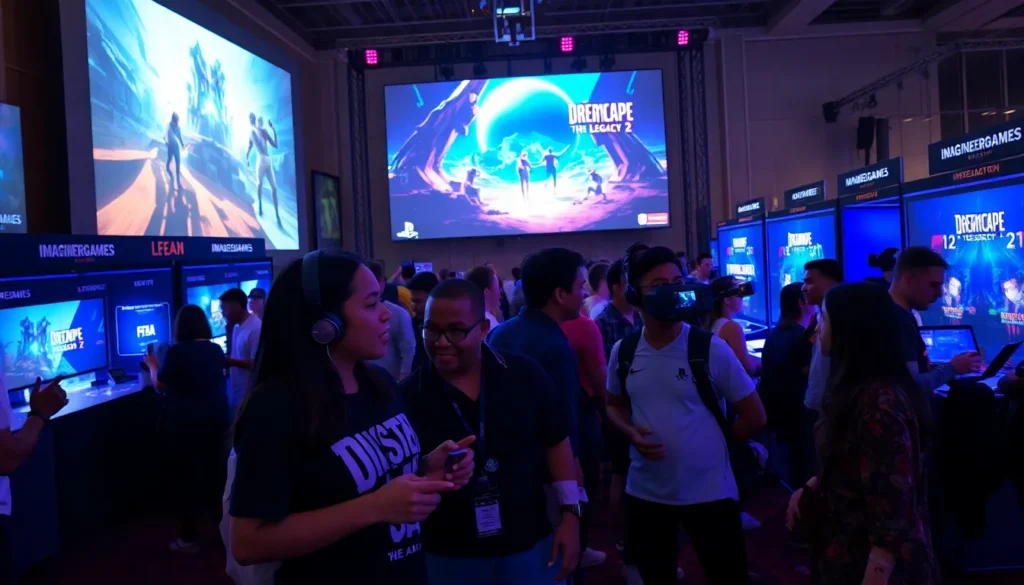Table of Contents
TogglePicture this: you have burning questions about your favorite games, or perhaps you’re pondering how to get involved in the exciting world of Imagineer Games. Guess what? The key lies in your inbox. In this text, we’ll explore how to effectively use email communication to unlock a treasure trove of information and opportunities within Imagineer Games. Strap in, because diving into the digital realm has never been this fun, or informative.
Understanding Imagineer Games

Imagineer Games is not just any ordinary gaming company: it’s a vibrant hub of creativity and innovation. Established in the heart of the gaming industry, this company has carved a niche for itself by developing engaging and imaginative experiences, often aimed at young audiences and families. Its reputation for quality is built not just on the games, but on its deep understanding of user engagement and experience. They take pride in crafts that challenge conventional gameplay while nurturing creativity and interaction among players. Who wouldn’t want to dive headfirst into a world crafted by such imaginative minds?
Overview of Imagineer Games’ Products
Imagineer Games boasts an impressive portfolio that appeals to a wide range of gaming enthusiasts. At the forefront are their educational and whimsical titles designed to captivate the psyche of budding gamers. Games like “Imagine Party” and various puzzles have captured hearts with vibrant graphics and engaging mechanics. Whether it’s strategic thinking or just plain fun, their products deliver value wrapped in delightful packaging. By utilizing modern technology while staying true to the art of gaming, Imagineer Games creates products that are immersive and educational. This fusion of fun and learning makes their catalog a worthy consideration for both casual players and serious gamers alike.
Importance of Email Communication in Gaming
In the gaming world, email isn’t just a formality: it’s a lifeline between developers and the gaming community. Connecting directly through email allows fans to express their feedback, ideas, or concerns about their gaming experiences. It’s a two-way street where Imagineer Games can gain valuable insights while fostering their community. Engaging with emails can not only enhance player experience but also drive innovation within their product lines.
How to Reach Out to Imagineer Games
Reaching out to Imagineer Games via email is as simple as pie, if you know the right ingredients. Start by visiting their official website. Typically, there’s a dedicated contact page where you can find specific email addresses or contact forms designed to handle various inquiries. Whether you have a question about game features or you’re interested in partnership opportunities, they have a channel for that.
Creating a Professional Inquiry Email
Now that reaching out is under your belt, crafting that email needs to be done with care. Start with a clear subject line that indicates your query. Ensure you introduce yourself briefly and state your purpose upfront. Would you like to ask for support, provide feedback, or solicit information on upcoming games? Being precise will help recipients address your needs promptly.
Common Email Protocols and Tips
When navigating the nuances of email communication, especially in a professional context, there are several golden rules to keep in mind. First off, always maintain a polite tone. Remember, the people on the other end are there to help, and expressing appreciation can go a long way. Secondly, use a professional email address. The domain may reflect your seriousness or lack thereof. A well-structured email can make the difference between instant replies or being left in the digital void.
Keeping emails concise and on-topic is crucial. Your message should be straightforward, cutting through the jargon without losing the essence of your inquiry. Also, don’t forget to proofread before hitting send, typos or unclear language might send your email off course.
Analyzing Feedback from Imagineer Games
Imagineer Games actively encourages feedback, and understanding how to analyze responses you receive can yield invaluable insights. After sending your inquiry, await their response patiently, as a hasty follow-up can seem unprofessional. When you receive feedback, break it down. Is it positive? Negative? Constructive? Each type of feedback serves a purpose. Positive feedback can help gauge what’s working well, while constructive criticism offers an opportunity for improvement. If you’re provided with suggestions or new features, consider following up with thoughtful commentary. This shows engagement and interest in fostering a two-way dialogue that can lead to further insights.




